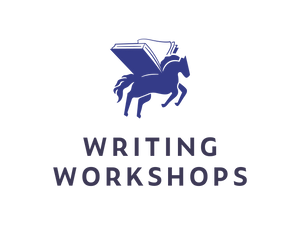Blog
An Introduction to Writing Historical Fiction by Jenny Bhatt
by Writing Workshops Staff
3 years ago

Join Jenny Bhatt for her Writing Historical Fiction Online Workshop
The Historical Novel Society provides this definition for historical fiction: “a novel which is set fifty or more years in the past, and one in which the author is writing from research rather than personal experience.” While there are also fictional characters in this genre, they will always be human. For example, the dragons in The Game of Thrones make it a fantasy set in a different time and place. Novels based on epics from Greece, Asia, etc. like, say, Circe by Madeleine Miller, are considered more mythology and magical realism. Certainly, there can be some elements of magical realism, mythology, fantasy, and folklore in historical fiction too. But this is usually in service of the main plot versus being a major plot point in itself.
Though we call it a “genre” now, it is actually an ancient literary tradition in almost all cultures around the world. From heroic tales of famous kings, queens, warriors to the excavated lives of the lesser-known supporting characters from those well-known stories, historical fiction has always been about filling in the gaps of historical record. Or, as Thomas Mallon said: “[T]wo occasions . . . best call for the historical novelist: when the facts have been lost to time, and when a time has been lost to the facts.”
Here are the generally-accepted sub-genres:
- Documentary Fiction — adheres closely to events of the era and strives to be as historically accurate as possible. Examples: Julie Otsuka’s The Buddha in the Attic; Michael Ondaatje’s The English Patient; Louise Erdrich’s The Night Watchman; Charles Frazier’s Cold Mountain; Toni Morrison’s Beloved about former slaves after the American Civil War; Min Jin Lee’s Pachinko about a Korean family immigrating to Japan.
- Biographical Historical Fiction — tells the fictionalized account of a real person’s life. Examples: Hilary Mantel’s Wolf Hall Trilogy about Thomas Cromwell; Colm Tóibín’s The Master about Henry James; Margaret Atwood’s Alias Grace about an alleged murderer; Michael Cunningham’s The Hours about Virginia Woolf; Elif Shafak’s The Forty Rules of Love; Tracy Chevalier’s The Girl With a Pearl Earring.
- Historical Series and Epics — cover multiple eras and settings across multiple volumes. Examples: Ken Follett’s Kingsbridge Series covers five centuries; Amitav Ghosh’s Ibis Trilogy covers much of the 19th century across British India, China, Mauritius, the UK; Pat Barker’s Regeneration Trilogy covers the First World War and its aftermath in Europe.
- Historical Mysteries and Thrillers — have all the elements of contemporary mysteries and thrillers but are just set in the distant past. Examples: Sujata Massey’s Perveen Mistry novels; Umberto Eco’s The Name of the Rose.
- Historical Romance — love stories but set in the past. Examples: Margaret Mitchell’s Gone with the Wind; Heather Morris’ The Tattooist of Auschwitz; A S Byatt’s Possession; Ahdah Soueif’s The Map of Love.
- Historical Adventures — books that take readers on historical journeys through air, sea, or land. Examples: Colson Whitehead’s The Underground Railroad; Patrick O’Brian’s Master and Commander series; Laila Lalami’s The Moor’s Account.
- Historical Fantasy — not exactly like contemporary fantasy but includes time travel and alternate histories. Examples: Stephen King’s 11/22/63; Robert Harris’ Fatherland; Bernard Cornwell’s King Arthur trilogy; Diana Gabaldon’s Outlander series; Gabriel Garcia Marquez' One Hundred Years of Solitude.
Beyond entertainment and shedding new light on our communal pasts, here are some ways that a historical novel can accomplish more:
- It can be an experiment that acts as an intervention in ongoing sociocultural and political debates. Consider how there’s so much fiction around Henry VIII and his many wives. Yet, it took Hilary Mantel to write the Wolf Hall trilogy focusing on Thomas Cromwell to forever change how we see this period of British history and, indeed, Henry VIII and his wives.
- It can challenge repressive mainstream narratives by opening up unknown or little-known aspects of the past. Sarah Waters’ Fingersmith gives us a view of Victorian homosexuality, lesbianism, and eroticism like nothing before.
- It can talk back to the dominant narratives by placing those who have been sidelined or dismissed into mainstream conversations. A lot of postcolonial historical fiction does this. For example, Amitav Ghosh’s Ibis Trilogy shows us British India but foregrounds the Indians and the Chinese versus the usual that we see in British Raj novels written by non-Indian writers. Chinua Achebe’s Things Fall Apart shows a pre-colonial African village before the white settlers came along.
Both of these are warranted concerns when a writer doesn’t do proper research, is sloppy about what historical record should be included, uses cliched language and tired stereotypes, does not present any new insights, does not broaden discussions around related key socio-political problems of our present times, and does not enable any necessary interventions in ongoing cultural debates.
This may sound like a tall order. But researching and writing a historical novel is hard work. Why even commit to such considerable labor if we’re not going to at least defamiliarize and dismantle commonly-accepted norms and knowledge systems? Why not make full use of the flexibility and malleability of this hybrid genre to create a literary artifact that will stand the test of time just like the very events and people we’re writing about?
Join Jenny Bhatt for her Writing Historical Fiction Online Workshop.
